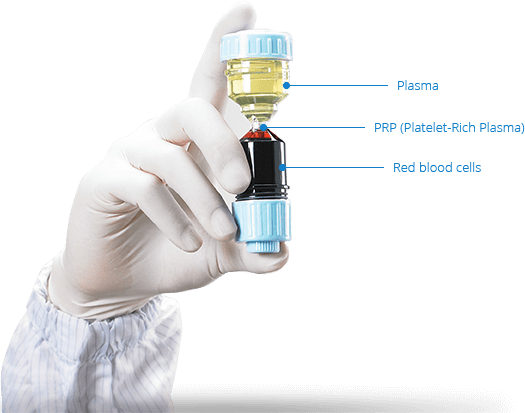What is PRP?
PRP is an acronym for Platelet-Rich Plasma and means plasma that has been enriched with a high degree of platelet concentration. PRP utilizes platelet-rich plasma from an individual’s blood to stimulate the repair and regeneration of damaged bone and soft tissue of the same individual.
How do blood components work in ophthalmology?
Human blood contains serum and platelets, rich in growth factors, which actively participate both in maintaining normal eye activity and in damaged tissue repair. It is succesfully used in treating both acute and chronic diseases, as wel as dry eyes disorders.
Can be used for the administration of serum eye drops with chemical, trophic and psysical characteristics similar to human tears, this natural tears substitute is used in treatment of chronic and dry eye related ocular disorders.
Growth factors found in PRP permit accelerated tissue regeneration, and this is offering an innovative and unique solution during reconstruction, remodeling and treatment of the ocular surface.

Advantages
PRP is safe
Using autologous blood means there is no risk of infection, allergic reaction or any other side effect.
PRP is convenient
The treatment is quick and absolutely noninvasive.
PRP is effective
Because the treatment uses growth factors, its effects are superior and long lasting.
PRP is natural
Patients feel no sense of violation.
PRP Mechanism
Dr. PRP is used to prepare PRP for ophthalmological treatment.
Eye drops
- Skin corneal lesions and dystrophy
- Neurotrophic keratopathy
- Superficial punctuate keratitis
- Keratopathy with loss of epithelial stromal tissue resulting from chemical or physical trauma
- Sicca syndrome or Sjögren’s syndrome
- Severe dry eye-related ocular surface disorders
- Ocular GvHD
- Recurrent erosion syndrome
